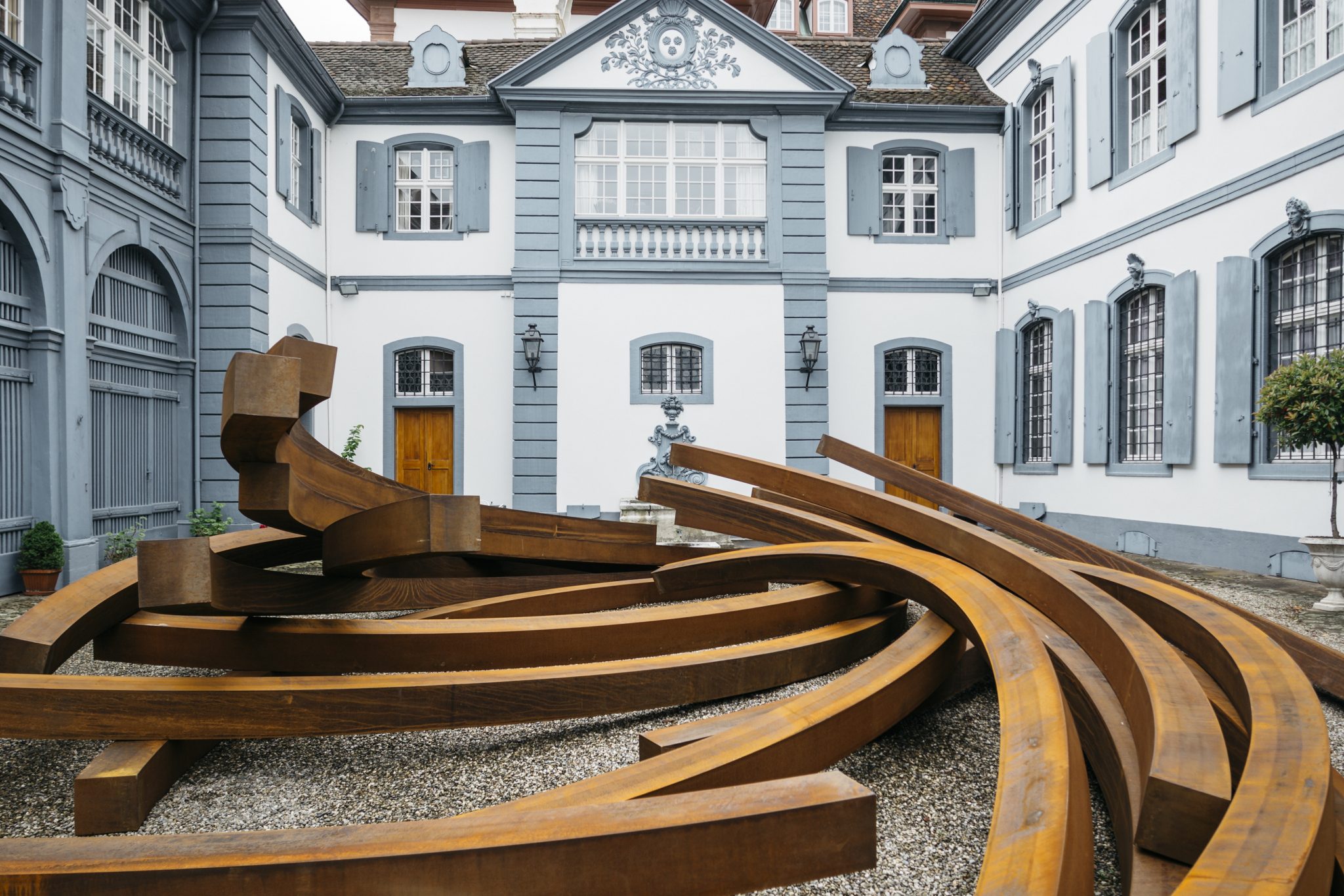Under the bridge the traffic lights stay at red. There would be gridlock were it not for the fact that there is no road to convey the traffic these lights might command. Instead there’s just a leafy footpath that creeps along the bank of the Rhine. And today even that’s pretty light on traffic, with only a few hardy souls trudging through the afternoon drizzle. Indeed, the lights, hanging from the dank arches of Wettsteinbrücke, seemingly a world away from the crowds in the main fair sections of Art Basel, are a work by Iván Navarro. As much as the lights say stop, they also introduce the loose theme of territory and the demarcation of space to Samuel Leuenberger’s Parcours – an extension of the art fair that sees site-specific works placed throughout the city of Basel.
While fair sectors such as Unlimited may have curators running them, this is the only truly curated – in the sense that it comes with some sort of narrative typically uniting the works, if only tangentially – sector of Art Basel. This year, Parcours comprises sculptures by 19 artists placed in the gardens, streets and public spaces of the old town surrounding its Romanesque cathedral. Leuenberger, who is also the curator of Basel offspace SALTS, seems as interested in introducing us to these venues as as he is in introducing us to the works themselves: at each stop a sign introduces the history of the site alongside a blurb about the work on show. One of the most beautiful of the former is the rose-filled private garden in which the concrete benches of Alberto Garutti are installed. The benches, from a series originally conceived as a public-art project in Trivero, each have the sculpted likeness of a dog local to the Italian town curled up on them. It’s sweet, obviously a little sentimental or whimsical, but within the context of this quiet space, oddly moving. It also alludes to a dog’s innate desire to own or mark its space. Likewise claiming possession of territory is Bernar Venet’s monumental Effondrement: Arcs (2016) – curved rusting steel struts, each over three metres in length, piled up on each other so that they dwarf the elegant courtyard they are installed within.
The curator seems as interested in introducing us to these venues as as he is in introducing us to the works themselves
The way in which space is colonised by the body is a notion raised by a collection of Hans Josephsohn’s human-sized bronze lumps installed in the square outside the cathedral: with only the barest suggestion of figuration they occupy Münsterplatz like an eerily inert army. Questions of the body and its form are there too in Michael Wang’s placement of the broken limb from a statue on the altar steps within the cathedral itself.
The great heavy mass of humanity and the amount of room it takes up on earth is poetically recalled in Allan McCollum’s work for Basel’s anthropology-focused Museum der Kulturen. In one room hundreds of wood-carved shapes are laid out on tables, as if for inspection. Taken from his 2005 The Shapes Project each is unique in form (though they generally resemble an enlarged spinning top) and comprised of six components taken from 144 different designs realized by the artist. McCollum believes that mathematically there is the scope to produce an individual work for every human on the planet.
McCollum’s work is somber one – existential in highlighting just how many people occupy this planet – but perfectly at home in a curatorial project that, given its association with an art fair and all the flurry of fashion and commerce that involves, proved unexpectedly philosophical in its aims.
Online exclusive published 17 June 2016
